03-Aug-02 : Attitash, NH
Attitash Mountain Village
Mount Washington
Our original plan was to get breakfast at the Attitash Resort before driving to Mount Washington where we had tickets booked on the 10:00 am train to the Summit.
This didn't quite work out, the restaurant was closed.
So we got into the car and started towards Bretton Woods and the valley station of the railway. We stopped at a roadside diner and got an adequate, if not particularly good breakfast, lovingly served on paper plates with plastic "silverware".
By the time we were finished we were a little short of time and arrived at the Railway Station a little after the pick-up time for our tickets. There wasn't a problem .. There were plenty of seats and no standby passengers for the early morning train.
In the event we had about 20 minutes to wait before our train, the first of 2 travelling together set off.
The Original "Little Engine That Could"
A ride up Mount Washington on the world's first mountain-climbing cog railway remains, as it has for well over a century, an exciting and unforgettable experience.
The ever-changing surroundings, the magnificent views, the sights and sounds of unique steam locomotives in action, and some of the steepest railroad tracks in existence, combine to place it among the best of the world's great railway journeys. This is a trip that must be made to be fully appreciated!
An Engineering Marvel Since 1869
Some days the view from the summit of Mount Washington spans four states, Canada, and the Atlantic Ocean, limited only by the curvature of the Earth. Other days you literally climb above the clouds.
But scenery isn't the reason most people ride the Cog Railway -- rain or shine, the exciting three-hour round trip is an unforgettable journey.
In 1869, the Cog Railway was an engineering marvel, a new technology of toothed cog gears, rack rails and tilted boilers. Today, when you ride the train you get a rare look at this world gone by, where coal fired dreams and steel rails mapped the course of civilization.
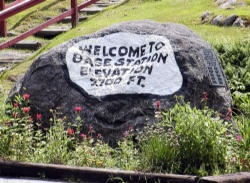
Mt Washington Cog Railway
|
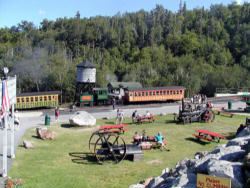
Mount Washington Cog Railway
|
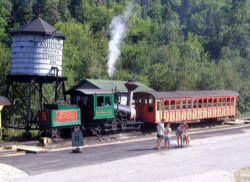
Mount Washington Cog Railway
|
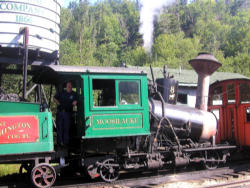
Mount Washington Cog Railway
|
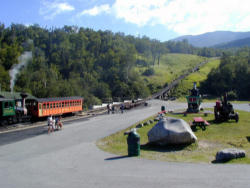
Mount Washington Cog Railway
|
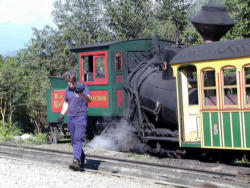
Mount Washington Cog Railway
|
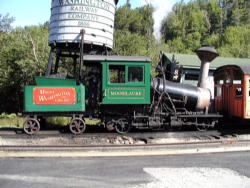
Mount Washington Cog Railway
|
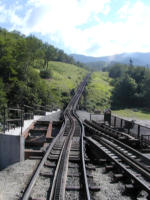
Mount Washington Cog Railway
|
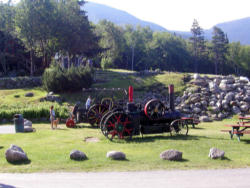
Mount Washington Cog Railway
|
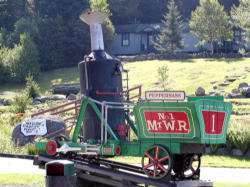
Mount Washington Cog Railway
|
In both directions, the locomotive has to be below the coach for safety. We had seats at the back of the carriage, with a great view of the "little engine that could".
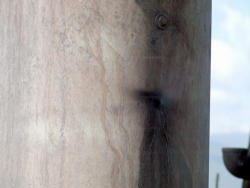
Mount Washington Cog Railway
|
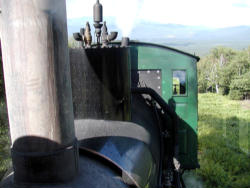
Mount Washington Cog Railway
|
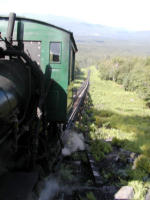
Mount Washington Cog Railway
|
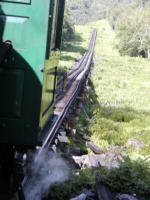
Mount Washington Cog Railway
|
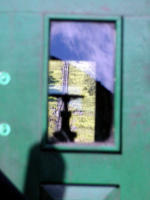
Mount Washington Cog Railway
|
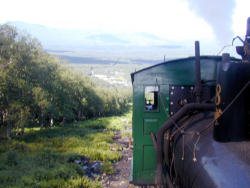
Mount Washington Cog Railway
|
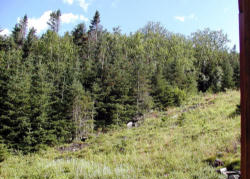
Mount Washington Cog Railway
|
One third of the way up, the train stops for the locomotive to take on water and to allow descending trains to pass. There was plenty of sooty smoke to locate the following train.
Two thirds of the way up there is another passing place.
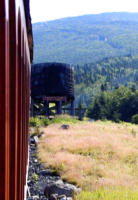
Mount Washington Cog Railway
|
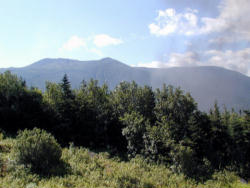
Mount Washington Cog Railway
|
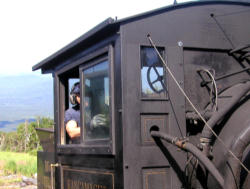
Mount Washington Cog Railway
|
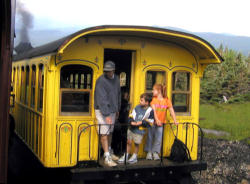
Mount Washington Cog Railway
|
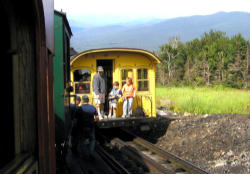
Mount Washington Cog Railway
|
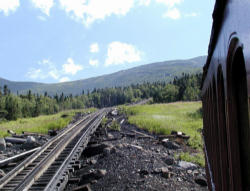
Mount Washington Cog Railway
|
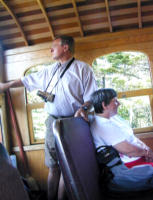
Mount Washington Cog Railway
|

Mount Washington Cog Railway
|
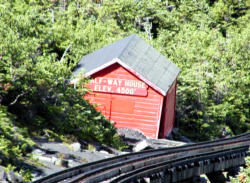
Mount Washington Cog Railway
|
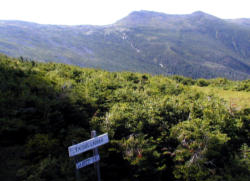
Mount Washington Cog Railway
|
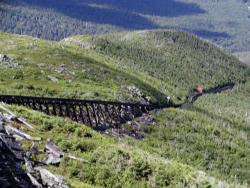
Mount Washington Cog Railway
|
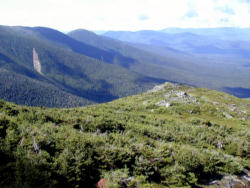
Mount Washington Cog Railway
|
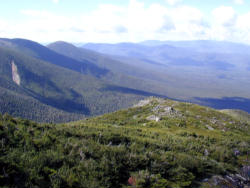
Mount Washington Cog Railway
|
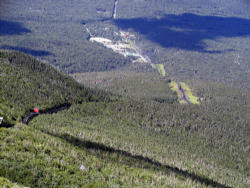
Mount Washington Cog Railway
|
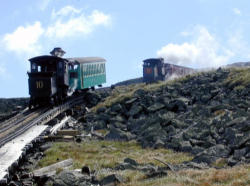
Mount Washington Cog Railway
|

Mount Washington Cog Railway
|
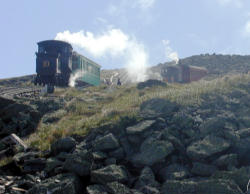
Mount Washington Cog Railway
|
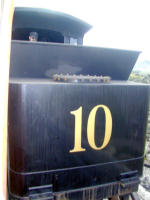
Mount Washington Cog Railway
|
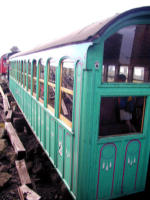
Mount Washington Cog Railway
|
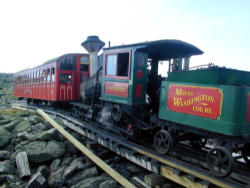
Mount Washington Cog Railway
|
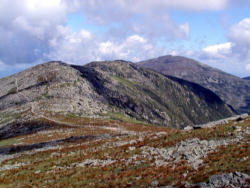
Mount Washington Cog Railway
|
At the Summit, we had about an hour to look around and admire the view. On the majority of days of the year, there is no view and the Mount Washington is the windiness place in North America.
We were lucky. Although there were clouds around, they did not really get in the way. So we were able to climb to the actual Summit, look in all directions and then spend some time looking at the locomotives before getting back on board to descend.
Mount Washington State Park, a 59-acre parcel perched on the summit of the Northeast's highest peak, is surrounded by the extensive 750,000-acre White Mountain National Forest. On a clear day, views from the 6,288-foot summit extend beyond New Hampshire as far as 130 miles to Vermont, New York, Massachusetts, Maine, Quebec, and the Atlantic Ocean. A modern summit building houses a cafeteria, restrooms, gift shops, the Mount Washington Observatory and its museum. The historic TipTop House is located adjacent to the summit building and is open to visitors when staff is available.
Truly the most outstanding feature of Mount Washington is its weather, considered by many to be the "worst in the world". The highest wind velocity ever measured on earth, 231 miles per hour, was clocked on the summit on April 12, 1934. Wind exceeds hurricane force (75 mph) over one hundred days a year. An average wind velocity of 35 mph, coupled with an average temperature of 27.1 F (-2.7C) makes for extreme wind chill conditions.
Why is the weather so severe? In addition to its lofty elevation, Mount Washington lies in the path of both the major storm tracks and the air mass routes that affect the Northeast. The mountain's topography and high elevation create an accelleration effect on the wind in much the same way a river's velocity increases as it passes over a rapid.
Darby Field, a British colonist from Exeter, made the first recorded ascent of Mt. Washington in 1642. It has been related through the years that Field's two Native American companions did not accompany him to the summit because the Great Spirit was believed to dwell there. The mountain's history has been colorful since that first ascent.
In 1819, Ethan Allen Crawford and his father Abel - early settlers and innkeepers of the Crawford Notch area, built the first trail to the summit. By the mid-1800s, tourism on the mountain flourished. Train service was extended into the White Mountains, and a bridle path was opened to the summit that made it accessible to tourists who were flocking to the area. The first hotel was built at the summit in 1852 to accommodate the tourists arriving on foot and horseback. It was so successful its first year of operation that a competing hotel, the Tip Top House was built the following year.
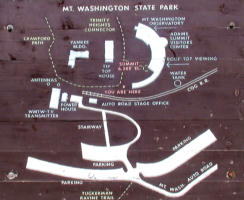
The Summit of Mount Washington
|
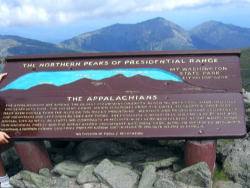
The Summit of Mount Washington
|
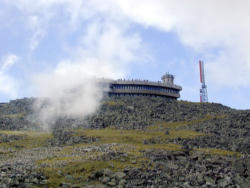
Mount Washington Cog Railway
|
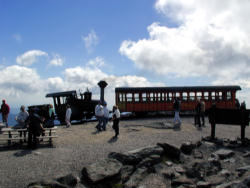
Mount Washington Cog Railway
|
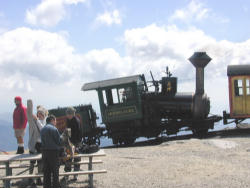
Mount Washington Cog Railway
|
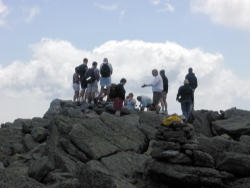
The Summit of Mount Washington
|
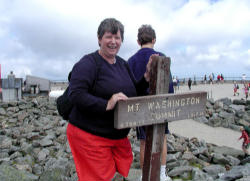
The Summit of Mount Washington
|
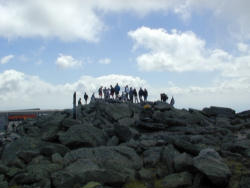
The Summit of Mount Washington
|
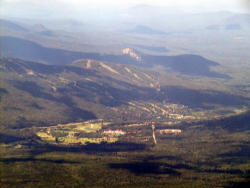
The Summit of Mount Washington
|
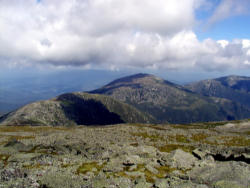
The Summit of Mount Washington
|
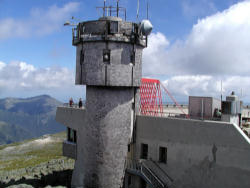
The Summit of Mount Washington
|
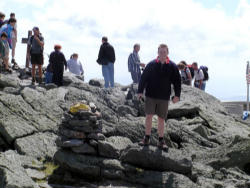
The Summit of Mount Washington
|
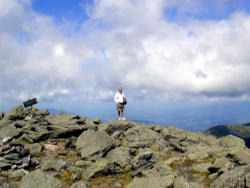
The Summit of Mount Washington
|
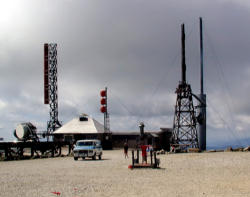
The Summit of Mount Washington
|

The Summit of Mount Washington
|
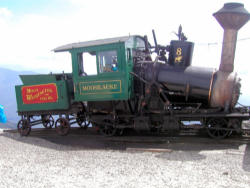
Mt Washington Cog Railway
|
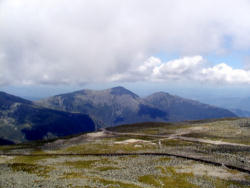
The Summit of Mount Washington
|
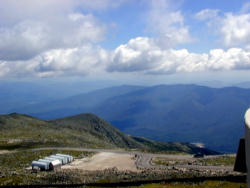
The Summit of Mount Washington
|
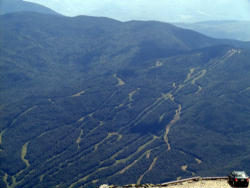
The Summit of Mount Washington
|
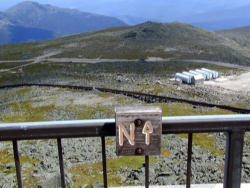
The Summit of Mount Washington
|
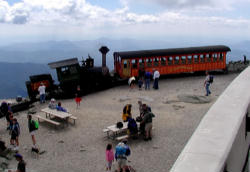
Mt Washington Cog Railway
|
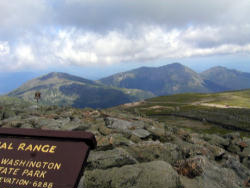
The Summit of Mount Washington
|
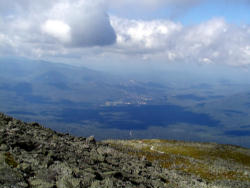
The Summit of Mount Washington
|
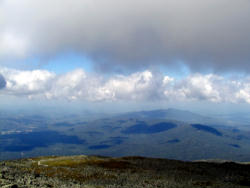
The Summit of Mount Washington
|

Mt Washington Cog Railway
|
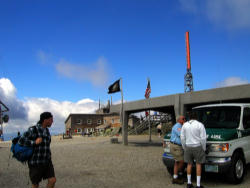
The Summit of Mount Washington
|
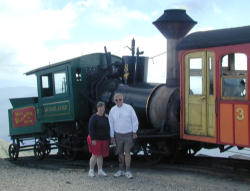
Mt Washington Cog Railway
|
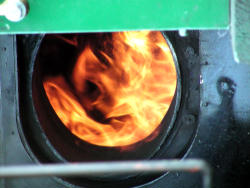
Mt Washington Cog Railway
|
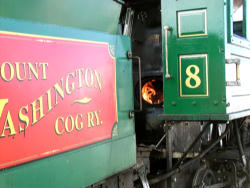
Mt Washington Cog Railway
|
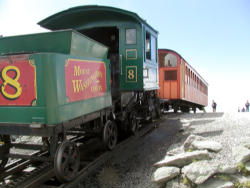
Mt Washington Cog Railway
|
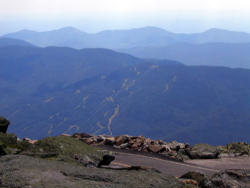
The Summit of Mount Washington
|
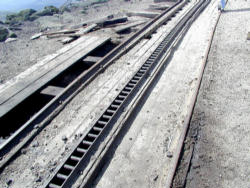
Mt Washington Cog Railway
|
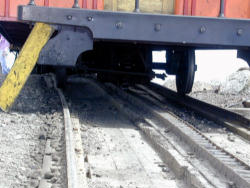
Mt Washington Cog Railway
|
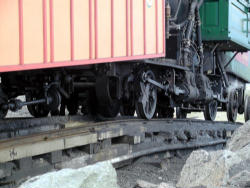
Mt Washington Cog Railway
|
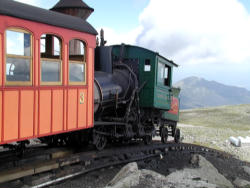
Mt Washington Cog Railway
|
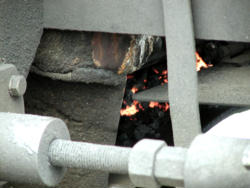
Mt Washington Cog Railway
|
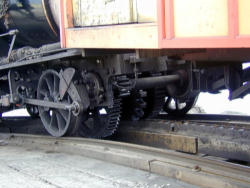
Mt Washington Cog Railway
|
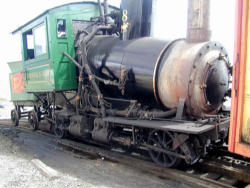
Mt Washington Cog Railway
|
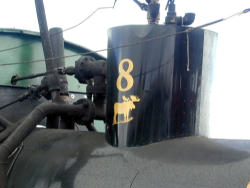
Mt Washington Cog Railway
|
On the descent we were able to watch the brake man at work. The objective was to maintain a very small gap between the coach and the locomotive below.
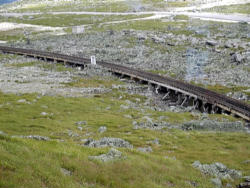
Mt Washington Cog Railway
|
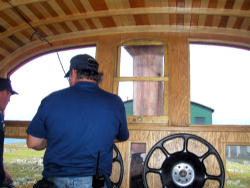
Mt Washington Cog Railway
|
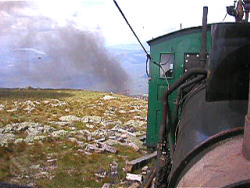
|
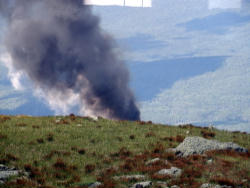
Mt Washington Cog Railway
|
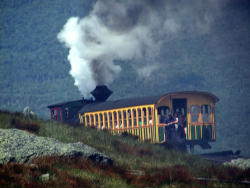
Mt Washington Cog Railway
|
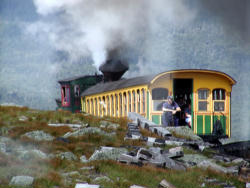
Mt Washington Cog Railway
|
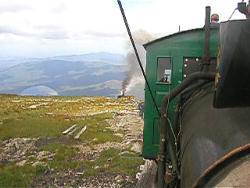
|
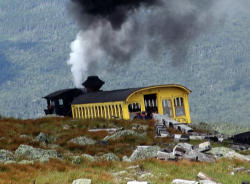
Mt Washington Cog Railway
|
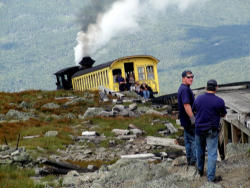
Mt Washington Cog Railway
|
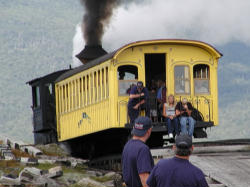
Mt Washington Cog Railway
|
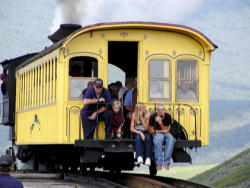
Mt Washington Cog Railway
|
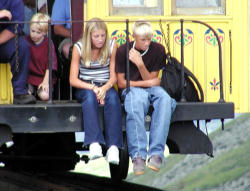
Mt Washington Cog Railway
|

Mt Washington Cog Railway
|
The History of the Mount Washington Cog Railway
His dream began in 1852 when, after becoming lost near the summit of Mount Washington, Sylvester Marsh knew that there had to be a better way for people to reach the highest mountain peak in the Northeast. Upon his return home, he immediately started working on a plan to build the world's first mountain-climbing cog railway.
Marsh, a native of Campton, New Hampshire, had made his fortune in Chicago's meat-packing industry and was considered by his contemporaries to be a creative and innovative thinker. However, upon first presenting his idea to members of the New Hampshire Legislature, they laughed at Sylvester Marsh and said that he "might as well build a railway to the Moon."
Undaunted, Marsh began the task of building his mountain climbing railway, along with inventors Herrick and Walter Aiken, a father-and-son team from Franklin, New Hampshire. The task was not an easy one, as equipment and materials had to be hauled by oxen for 25 miles to Bretton Woods, and then another six miles through thick forest to the base of Mount Washington. But on July 3, 1869, 'Old Peppersass' became the first cog-driven train to climb 6,288-foot Mount Washington.
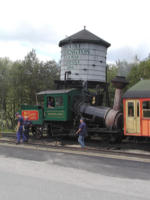
Mt Washington Cog Railway
|
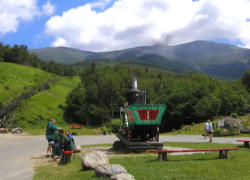
Mt Washington Cog Railway
|
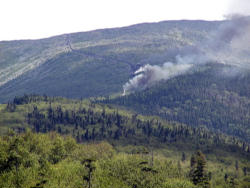
Mt Washington Cog Railway
|
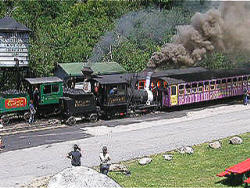
|
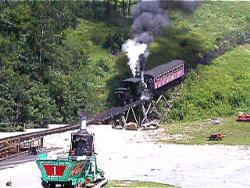
|
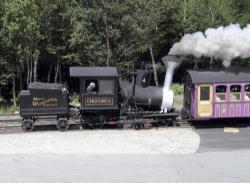
Mt Washington Cog Railway
|
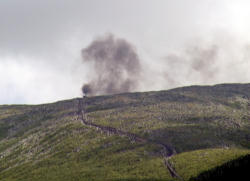
Mt Washington Cog Railway
|
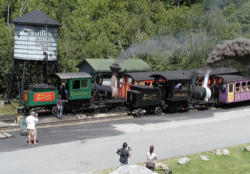
Mt Washington Cog Railway
|
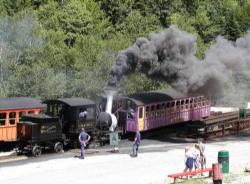
Mt Washington Cog Railway
|
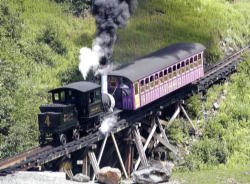
Mt Washington Cog Railway
|
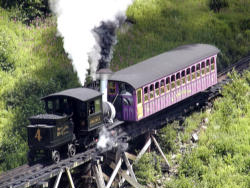
Mt Washington Cog Railway
|
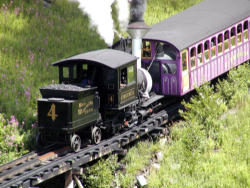
Mt Washington Cog Railway
|

Mt Washington Cog Railway
|
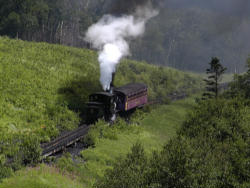
Mt Washington Cog Railway
|
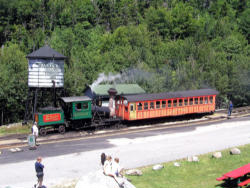
Mt Washington Cog Railway
|
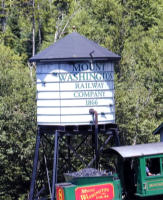
Mt Washington Cog Railway
|
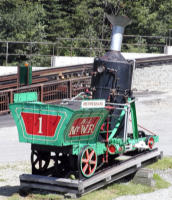
Mt Washington Cog Railway
|
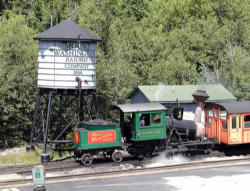
Mt Washington Cog Railway
|
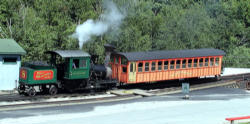
Mt Washington Cog Railway
|
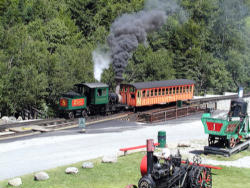
Mt Washington Cog Railway
|
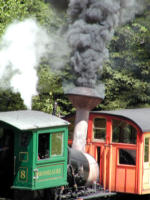
Mt Washington Cog Railway
|
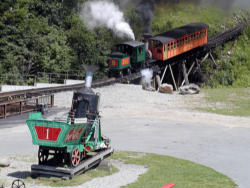
Mt Washington Cog Railway
|
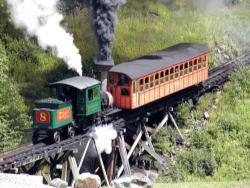
Mt Washington Cog Railway
|
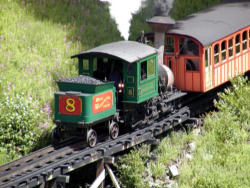
Mt Washington Cog Railway
|
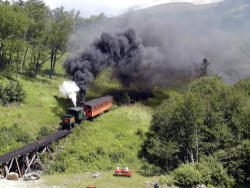
Mt Washington Cog Railway
|
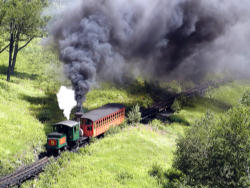
Mt Washington Cog Railway
|
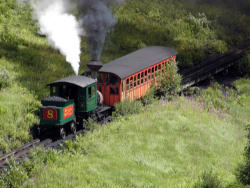
Mt Washington Cog Railway
|
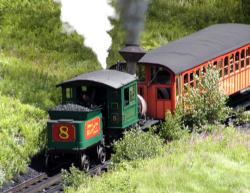
Mt Washington Cog Railway
|
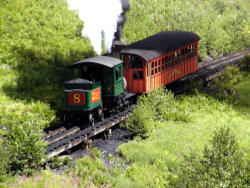
Mt Washington Cog Railway
|
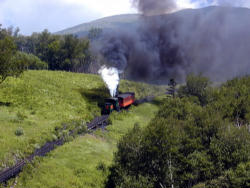
Mt Washington Cog Railway
|
We stopped at a store to buy some sandwiches and then headed back to the hotel looking for somewhere to stop for a picnic. On the way up to Mount Washington, we noticed a possible spot near a small pond and returned there. The area around the "Willey Pond" was perfect.
From the car park we walked across a pretty bridge across the weir that created the pond to find picnic tables spread out in the trees. We were able to find some shade to protect us from the heat of the sun.
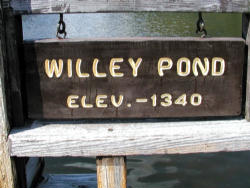
Willey Pond
|
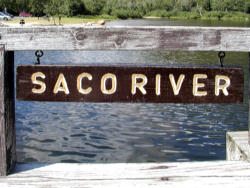
Willey Pond
|
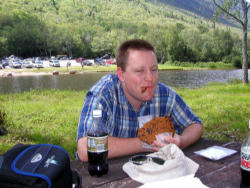
Willey Pond
|
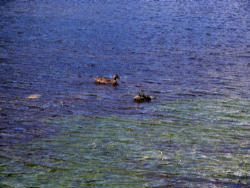
Willey Pond
|
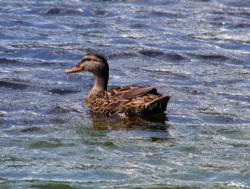
Willey Pond
|
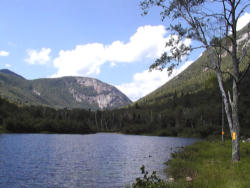
Willey Pond
|
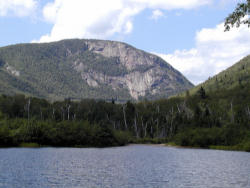
Willey Pond
|
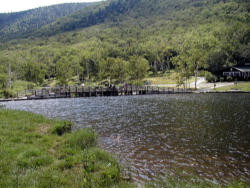
Willey Pond
|
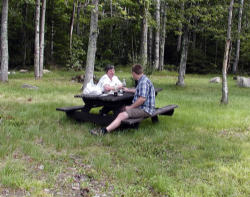
Willey Pond
|
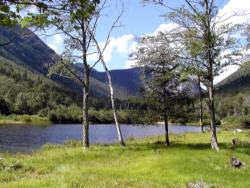
Willey Pond
|
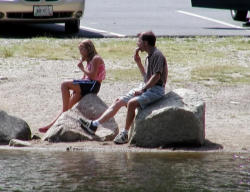
Willey Pond
|
There was a short nature trail signposted from the picnic site, going through the trees and back along the edge of the pond.
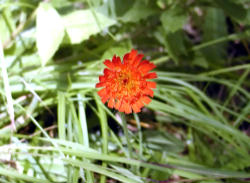
Willey Pond
|
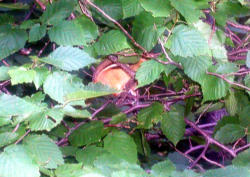
Willey Pond
|
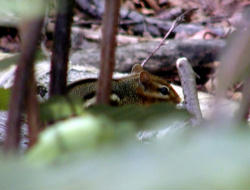
Willey Pond
|
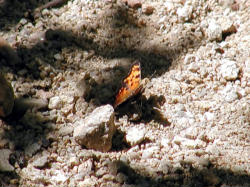
Willey Pond
|
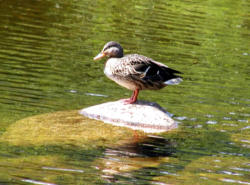
Willey Pond
|
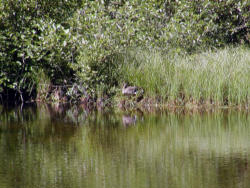
Willey Pond
|
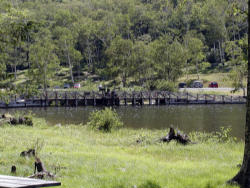
Willey Pond
|
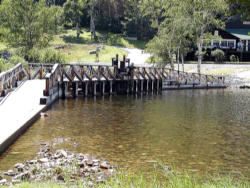
Willey Pond
|
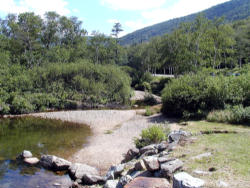
Willey Pond
|

Willey Pond
|

Willey Pond
|
Returning to Attitash, Chris and I went across the Alpine Slide. Our first run down was pretty uneventful, but we were definitely getting more confident and going faster. On our second run down, Chris was somewhat delayed in reaching the bottom. When he eventually did arrive, he was rather the worse for wear. Part way down, the person in front of him was stopped and he came off the track trying to stop.
I didn't realise immediately how bad he was, but he had nasty burn/grazes in several places which proved rather painful for several days.
While Chris nursed his wounds, Sue and I went for a walk through the trees behind the resort. Although it was late in the afternoon, it was still stiflingly hot and there were far too many insects around.

Willey Pond
|
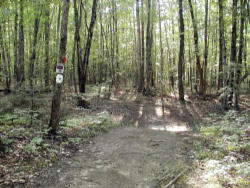
Walk near Attitash Village
|
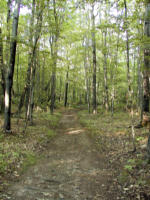
Walk near Attitash Village
|
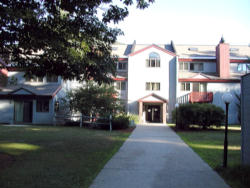
Attitash Village Apartment
|
We drove around looking for somewhere to stop for dinner and eventually found a German Restaurant in Conway that fitted the bill.
















































































































































